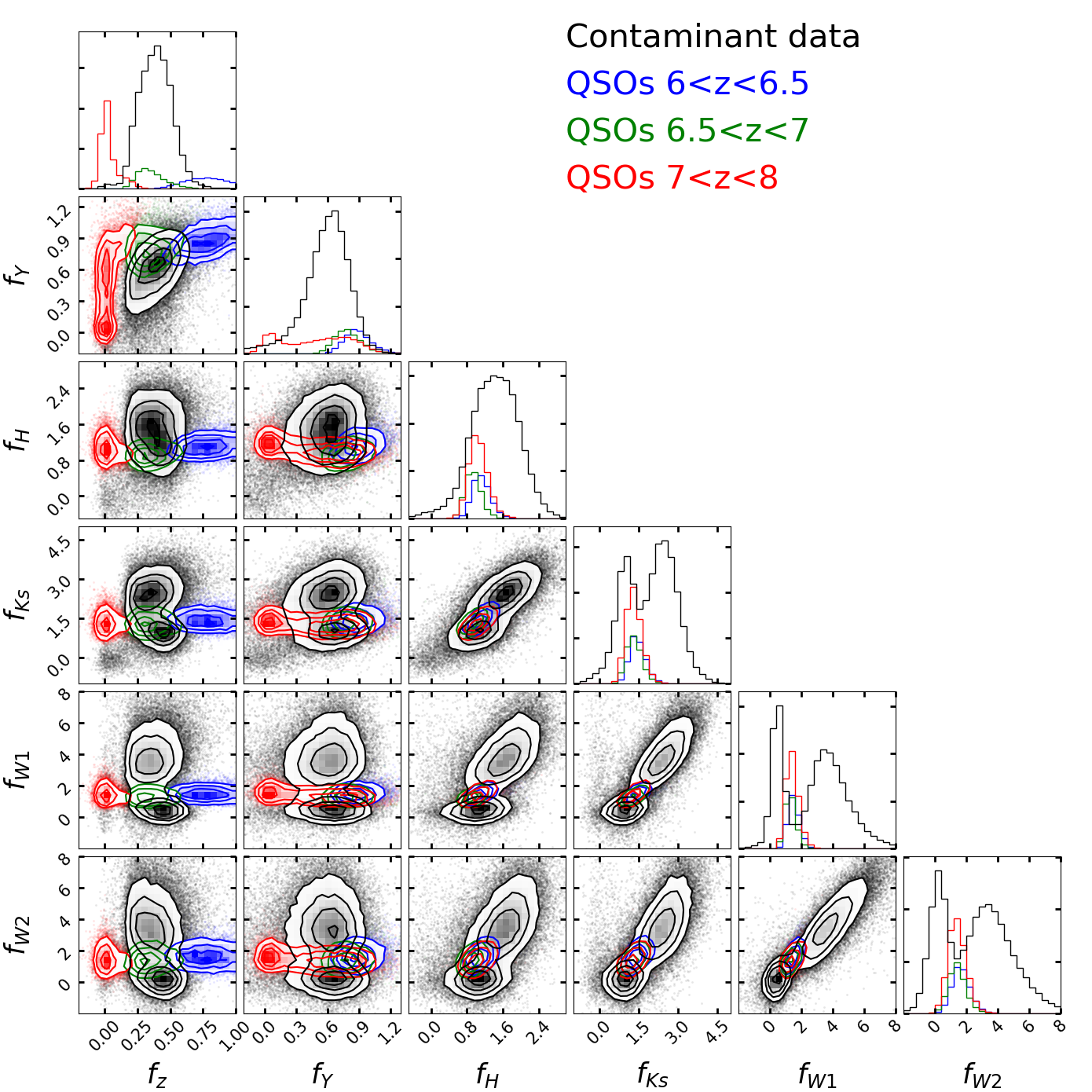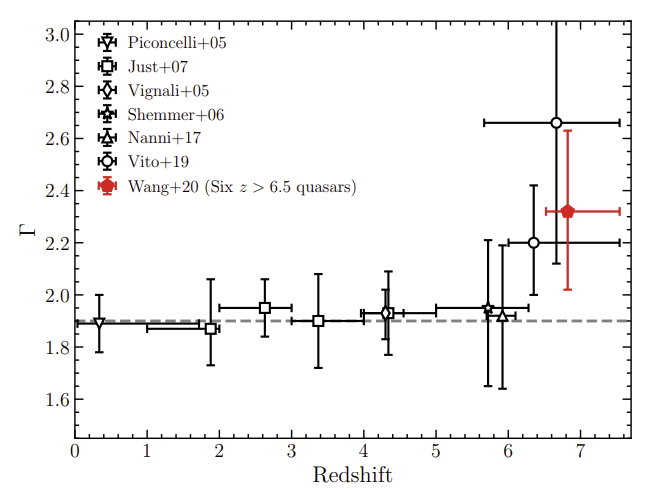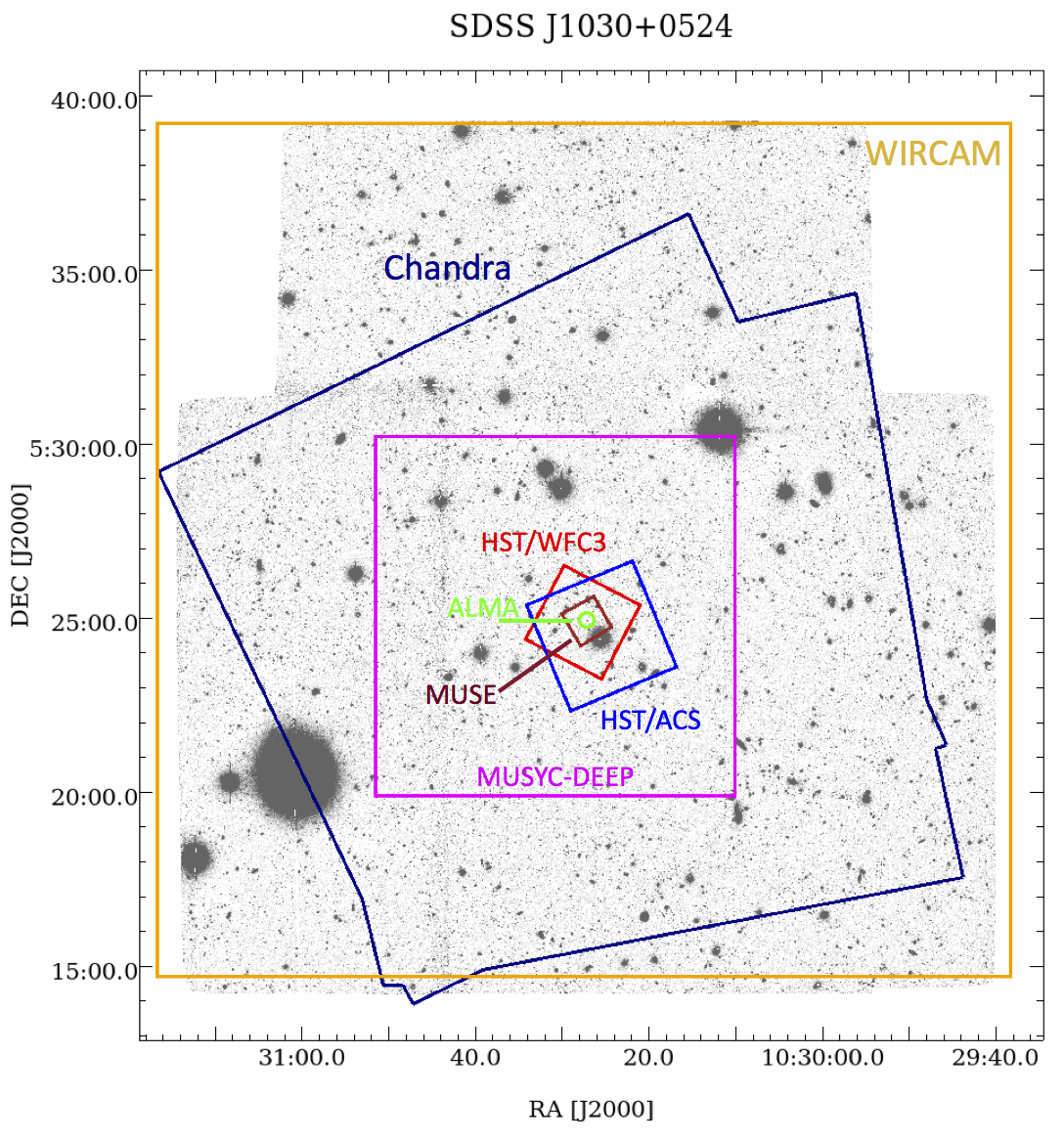Since my master thesis I focussed my research on understanding the formation of the supermassive black holes (SMBHs) at z≥6. My master project was the study of the X-ray spectral properties of the primordial quasars (QSOs). During my Ph.D., I continued to investigate the origin of the primordial SMBHs, probing the environment around the z=6.3 QSO SDSSJ1030+0524, that shows the best evidence to lay in an overdense region. Now I am working in the ENIGMA group led by Prof. Hennawi at the Leiden Observatory. My main research topic is the study and search of high-redshift SMBHs, with particular focus on the use of optical/NIR data and telescopes.

Hunting for High-Redshift Quasars
High redshift quasars are important probes to study the formation and evolution of supermassive black holes (SMBHs), early structure formation, and the history of cosmic reionization. However, hunting for high-redshift quasars is extremely challenging due to their low spatial density and a high rate of contamination from very red objects, especially for z>7 QSOs. To date, ~300 quasars with spectroscopic z>5.5 were discovered by wide-area optical and near-IR (NIR) surveys, but only a few of them (<10) are at the highest observable redshift (z>7). With the use of machine learning classification methods, we are hunting for high-z QSOs, aiming at improving the selection of high-z QSO candidates for spectroscopic followup. Collecting high quality spectra of these QSOs will allow us to put the most stringent constraints on the early SMBH formation and growth history.

High-Redshift Quasar properties
Multi-wavelength observations showed that high-z QSOs are evolved systems with large black hole masses (108-9sup> Mo), large amount of gas and dust, and intense star formation in their host galaxies (Mgas ∼ 109−10 Mo, Mdust ∼ 108−9 Mo, SFR up to 1000 Mo yr−1). The presence of such heavy SMBHs, observed in QSOs up to z=7, and hence formed in less than 1 Gyr, is a challenge for modern astrophysics. At z~7, only ∼14 e-folding times elapsed since the first luminous object formed in the Universe (i.e., z∼30), corresponding to a factor of ∼106 increase in mass, placing the most stringent constraints on the SMBH formation and growth mechanisms. Furthermore, optical and NIR observations showed that the broad-band spectral energy distributions (SEDs) and the rest-frame NIR/optical/UV spectra of QSOs have not significantly evolved over cosmic time. Thanks to the increase of observed high-z QSOs in the X-rays, we were recently able to confirm that also X-ray spectral properties of QSOs are constant over cosmic time.

Primordial Environment of SMBHs
Structure formation models suggest that earliest SMBHs should form in high density peak dark matter halos, and can be traced by the most overdense regions, which could be the beacons to protoclusters in the early Universe. In the past decade, large efforts have been made to find overdense regions in fields as large as 2×2 pMpc around z∼6 QSOs, but the results were inconclusive. Some of them ascribed the lack of detection of overdensities at very high-z to the strong ionizing radiation from the QSO that may prevent star formation in its vicinity, while others pointed out that cosmic variance is severe at this scale: field size larger than 5 Mpc is needed to fully probe the overdensity. To overcome this problem, we conducted an extensive multi-wavelength observing campaign around four z~6 QSOs, and discovered the first evidence of a primordial overdensity around the z=6.3 QSO SDSSJ1030+0524. Furthermore, we also found the first evidence of variability of a z>6 QSOs.